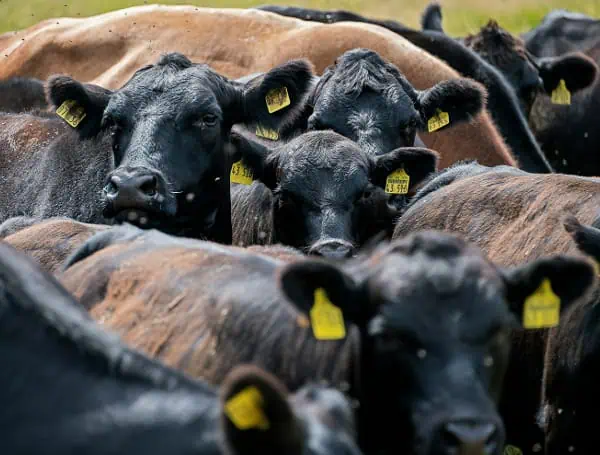A new variant of avian influenza affecting dairy cattle in Nevada has a genetic mutation that could make it easier for the virus to replicate in mammals, including humans, according to a technical brief released by the US Department of Agriculture’s Animal and Plant Health Inspection Service.
While the CDC maintains that the risk to the general public remains low, they acknowledge that individuals working on farms or with backyard poultry are at a higher risk of infection.
The USDA report coincides with a confirmed case of H5N1 in a Nevada dairy farm worker, the first human infection identified in the state. The worker is reportedly experiencing conjunctivitis (red, inflamed eyes). The CDC is currently working to confirm the initial positive test.
READ: Trump Defends Elon Musk’s Role In DOGE Amid Legal Challenges
The infections in Nevada dairy cattle are raising concerns because the gene sequences of the virus show it is a subtype of H5N1, known as D1.1.
This subtype has been linked to two severe human infections in North America, including one fatality. The affected herds, located in the same valley in Churchill County, represent the first known instance of the D1.1 variant spreading to cattle. Previously, it had only been detected in birds and humans.
Most bird flu infections in US dairy cattle have been caused by the B3.13 variant, also known as the “cattle clade.” The transmission route of the D1.1 variant to the Nevada cows is unknown, although farmers with infected herds reported significant die-offs of wild birds near their farms prior to the cattle becoming ill, suggesting a possible transmission through contact with infected birds or their droppings.
The D1.1 viruses found in the Nevada cattle possess a mutation that enhances the virus’s ability to replicate within mammalian cells, including human cells. This specific mutation has not been observed in other D1.1 infections in wild birds or poultry, raising the possibility that another animal, such as a cat or fox, might have introduced the virus to the farms.
READ: Trump Announces New Tariffs On Steel And Aluminum Imports, Plans Reciprocal Measures
D1.1 is a new clade created by a “shift” – a significant change where the virus swaps entire segments of its genome. It combines a highly pathogenic H5N1 virus from Asia with a low-pathogenic flu virus already present in North American birds. D1.1 was first detected in wild birds in September 2024 and has become the dominant H5N1 lineage in wild birds in North America.
The D1.1 subtype has previously been detected in humans, including workers depopulating infected poultry in Washington state (who experienced mild respiratory symptoms), a 13-year-old girl in British Columbia who suffered severe illness, and a person in Louisiana who died from the virus.
Genetic sequencing of the virus from these human cases revealed changes suggesting the virus was adapting to infect human cells more efficiently.
Please make a small donation to the Tampa Free Press to help sustain independent journalism. Your contribution enables us to continue delivering high-quality, local, and national news coverage.
Connect with us: Follow the Tampa Free Press on Facebook and Twitter for breaking news and updates.
Sign up: Subscribe to our free newsletter for a curated selection of top stories delivered straight to your inbox.

